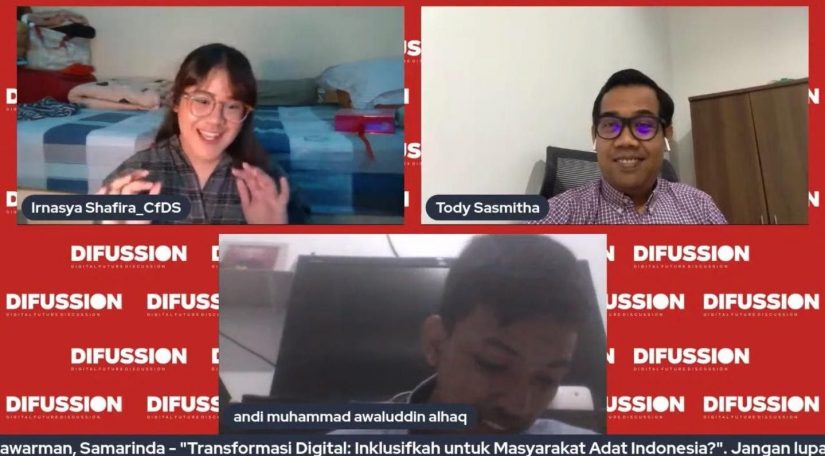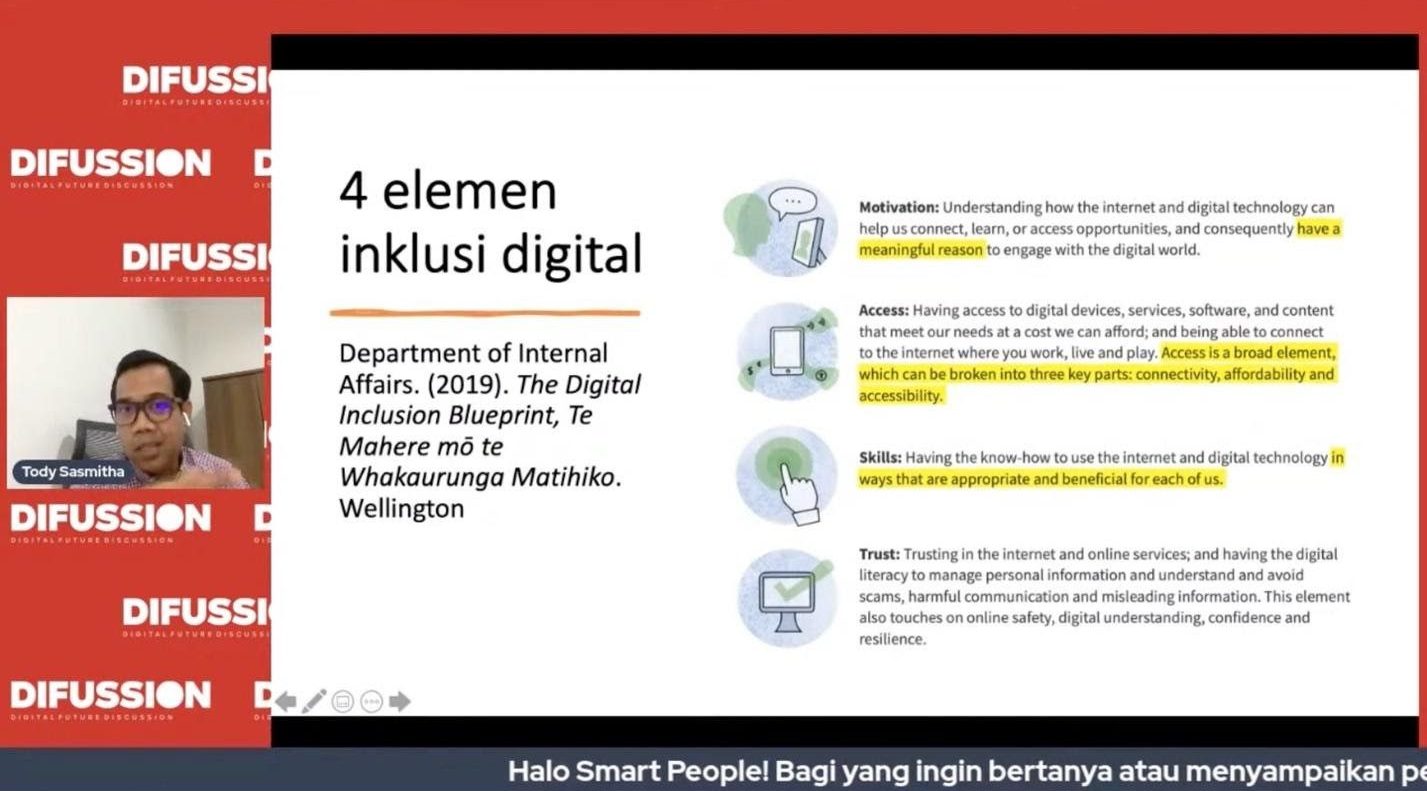
Yogyakarta, November 12th 2021─Center Digital for Society (CfDS) of FISIPOL UGM in collaboration with BEM FH Mulawarman University held Diffusion #63 entitled “Digital Transformation: Is it Inclusive for Indigenous Peoples of Indonesia?” on Friday (12/10). The event, which took place via the CfDS UGM Youtube streaming, invited speakers Irnasya Shafira, as the Research Associate of CfDS and Tody Sasmitha, as a Traditional Law Lecturer at the Faculty of Law of UGM.In the presentation session, Irnasya said that internet access is very important in digital transformation. In 2019, the highest proportion of individuals using the internet was in DKI Jakarta province at 73.46% and the lowest in Papua province at 21.70%. According to Irnasya, Papua is experiencing geographical challenges where the position of Papua itself is very extreme and diverse geographically.
“The diverse geographical situations create different indigenous peoples as well. Indigenous people living in the mountains have very different livelihoods from indigenous peoples on the coast, so their characteristics are different,” she said.
With the problem of the existing infrastructure gap, Irnasya said the topic of indigenous peoples is not yet relevant for the discussion of digital transformation. This is because there is no physical infrastructure that allows the existence of the internet so that the inclusiveness of indigenous peoples in digital transformation programs becomes very hard.
In this regard, indigenous peoples need to be prepared to carry out digital transformation. The trick is to consider the factors that hinder internet penetration, namely geography, culture, political urgency, and human capital.
“Geographically, how do we innovate technologically and developmentally to be able to build internet infrastructure in remote areas. Culturally, how can we introduce the internet as a new resource that can improve the quality of life, then what is their political urgency to adopt digital transformation and how is the human capital,” Irnasya said.

Meanwhile, Tody explained that digital inclusion means ensuring the accessibility of the internet for social and economic development. Apart from internet access, there are three other elements of digital inclusion that need to be prepared. The first is motivation, how to ensure that indigenous peoples have meaningful reasons to engage with the digital world. The second is skills to encourage digital literacy about using and utilizing the internet properly. The third is trust where when we live in a digital world, it means we have to have an understanding of people we have never met.
“When we talk about digital inclusion, it cannot just provide access in terms of infrastructure, connectivity, and so on. This can be a double-edged sword when access is provided, but it actually changes the cultural aspects, production patterns, and the economy of indigenous peoples,” he said.
